In any field, it is important for experts to speak in one language and understand each other easily. The system of categories plays the main role in it. TESLASUIT team made VR glossary that includes essential terms of industry. Stay on top of VR development!
А
Active presence (i.e. “hand presence”)
An immersive state as a result of utilizing an additional manual device within virtual reality environment.
Artificial reality
Simulated space as a result of video systems and computer combination.
Aspect Ratio
The proportion of the width of the viewing screen to its height. Aspect ratio can influence how the visual series appear and whether they This can affect how the images from the VR world appear and whether they are distorted or not.
Augmented reality
A real reality that is complemented with additional information which the user can see through glasses.
AR is the result of introducing in the perception field any sensory data in order to supplement info about the environment and improve the perception of information.
Authorial intent
The extent to which the developer of the environment program a possible course of events or let the system to adjust to the user.
Avatar
A virtual representation of the user who is in the virtual environment.
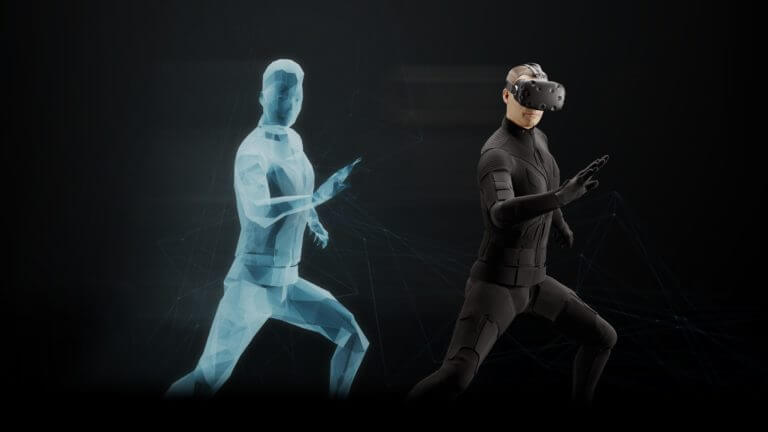
TESLASUIT motion capture system
B
Binocular Omni Orientation Monitor (BOOM)
One of the oldest virtual reality displays. BOOM was very popular when head-mounted displays were too heavy and bulky, and that’s why uncomfortable. Binocular Omni Orientation Monitor includes 3D display fixed to the ceiling or the top part of BOOM and can be moved by the user. He or she brings it closer to the eyes and experience a new environment.
Browser
A set of data and instruments such as lists, indexes, and animated maps that help a user or an experiencer to navigate through virtual and physical elements of a virtual world.
С
CAVE (cave automatic virtual environment)
A multi-faceted (from 3 to 6 screens) 3D visualization system reminding cuboid room that allows users to simultaneously manipulate complex 3D models in a 1:1 scale and provides the greatest immersive effect.
Cinematic VR
Special kind of VR that uses real images from cameras instead of computer-generated graphics. This helps to achieve super-realistic virtual reality experience.
Collision detection
The computational problem of detecting two or more objects’ intersections. Such situation can cause visual of haptic feedback for the user.
Controller
An input device that is used in virtual reality.
With the help of a controller, an experiencer controls movements and actions of different elements of the environment.

Cue conflict
A theory explaining that motion sickness during VR experience occurs when the body tries to interpret conflicting signals coming from the senses. The main reasons are incorrect calibration of HMD or delay between touch inputs and output display.
Cyberspace
The metaphorical abstraction used in computer technology. It is a virtual reality environment, often 3D, where communication is carried through computer networks.
The word “cyberspace” (from cybernetics and space) was first introduced by William Gibson, the Canadian science fiction writer, in 1982 in his novel “Burning Chrome”.
Cyberspace should not be confused with the real Internet. This term is often used to describe objects widely distributed in a computer network. For example, a website can be described metaphorically as being “in cyberspace”. Using this interpretation, it can be said that Internet events do not occur in countries or cities in which servers or participants are physically located, but occur in cyberspace. This will become reasonable when distributed services will become widely used when the identity and location of network members can not be determined due to anonymous or pseudo-anonymous communication. It becomes impossible to apply the laws of each state or each country in cyberspace.
Cyborg
A biological organism containing mechanical or electronic components, a hybrid of a human and a machine.
The term “cyborg” was introduced by Manfred E. Klynes and Nathan S. Klin in 1960, in connection with their concept of a human empowerment for survival outside the Earth. This concept was the result of thinking about the need for a closer, more intimate relationship between man and machine, as space exploration becomes a reality.
There is a theory that dependence of man on mechanisms is increasing. That’s why the replacement of organs with mechanical devices (prostheses, implants) creates the conditions for the gradual transformation of man into a cyborg.
D
Data glove
A data input device for the interaction of a person with a computer in the form of a glove.
Various sensors detect movements of the fingers and the entire hand. By activating the sensors with certain movements, a user can execute the commands associated with them. Then these movements of the fingers and the entire hand are deciphered with the help of software, which goes with the glove. Each movement and rotation with a finger or the entire hand means a certain command. When using data glove, a user does not need to shift one’s gaze from the computer monitor to the keyboard or mouse.
Also, a data glove can be useful for people with disabilities, because the computer is able to analyze commands using finger-speech.
More expensive high-tech data gloves can provide haptic feedback, thereby making the glove a device not only for data output but for input too.
Most often, data gloves are used in the gaming, since the device can be programmed to perform a variety of actions in a gameplay. Some experts claim that it is especially convenient to use data gloves for online strategies with a large number of users.
Directional Sound
One of the sound types in virtual reality movies or games, when there is a feeling that sound comes from a certain zone. On the contrary, overall background sound is used, but it is not so immersive.

Dollhouse View
An overlook from a certain height so that an experiencer could see the entire picture of the artificial space in order to make more optimal decisions regarding future moves.
Doppler Effect (VR)
Сhange in the frequency of sound and/or light, perceived by the observer due to the movement of the source of the sound and/or light.
Dynamic Lighting
Changes of lighting effects as an experiencer or object moves.
E
Effector
An interfacing device that is utilized in virtual reality for input/output, tracking and haptic feedback. The core examples are data gloves, HMDs, headphones, and trackers.
Egocenter
An ability of a user or an experiencer to identify his or her location in a virtual environment.
Embodied cognition
A theory that cognition is not only confined to the brain but also relates to the entire body.
The main conclusion of this idea is that we perceive the situation depending on what we touch.
Embodied presence
Awareness of being in virtual reality.
Emotional presence
A situation, a narrative or a state that result in an emotional response from the user, for example, empathy, within a VR experience.
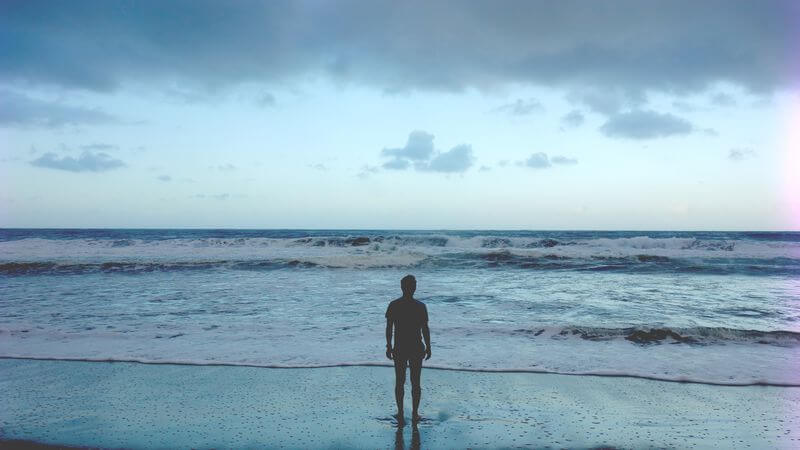
Empathy
Empathy is a possibility to realize what other person feels as the result of his experience. Very often this notion is understood as the ability to empathize with a human or to put oneself in his or her place.
The range of manifestation of empathy varies widely, from a mild emotional response to a complete immersion in the world of feelings of another person.
To better understand what empathy is and how it is connected with virtual reality, read our article “Empathy and virtual reality: subtle interconnection and impact on society”.
Environment
As for virtual reality, it is a space generated by a computer and experienced by a user.
Experiencer
A synonym to “user” or “player”.
Exoskeleton
A device designed to compensate for lost functions, increase the strength of the human muscles and expand the amplitude of movements due to the outer framework and the leading parts.
The exoskeleton repeats human biomechanics for a proportional increase in the effort during movements.
The first exoskeleton was jointly developed by General Electric and the US Armed Forces in the 60s and was called Hardiman. He could lift 110 kg with the force applied when lifting 4.5 kg. However, it was impractical due to its considerable mass of 680 kg.
The main direction of development is the military use of exoskeletons. Another possible area of application of exoskeletons is to help injured people and people with disabilities, the elderly, who have problems with the musculoskeletal system because of their age. The ReWalk exoskeleton, developed by ReWalk Robotics, allows paralyzed people to walk.
Eye clearance
An index that describes a position of a head-mounted display relatively to an eye.
Eye tracking
An attribute of head mounted display that enables recording how the user’s eyes are moving during the experience. It is used for virtual reality analytics to understand what content makes the experiencer to focus.
![]()
F
Field of view (FOV)
The view that can be seen by the user while rotating his or her head when body position is fixed.
The average human FOV is about 200 degrees.
Fractal
A self-similar graphical pattern created by virtue of repetition of pattern details on an increasingly small scale.
Frustum of vision
A field of view in 3D space in terms of which objects can be seen by an experiencer.
G
Gesture
Some action or movement of a human body or its parts, having a certain meaning, that is, being a sign or symbol.
Ghost story
VR experience where the user is just an observer while events are taking place around. This can be compared to watching a movie, with no making actions or talking to characters.
Gouraud shading
A method of painting in 3D computer graphics (shading), designed to create the illusion of a smooth curved surface, described as a polygonal mesh with flat faces, by interpolating the colours of adjacent faces.
The method was first proposed by Henri Gouraud in 1971.
H
Haptic feedback
A technology, which allows one to receive tactile information through one’s sensations. As a rule, in VR such an effect is created through gloves or suit.
Head-coupled
Some actions that can be activated via head tracking devices.
Head mounted display (HMD)
A helmet or goggles with miniature monitors in front of each eye to create images which the wearer can see as three-dimensional ones.
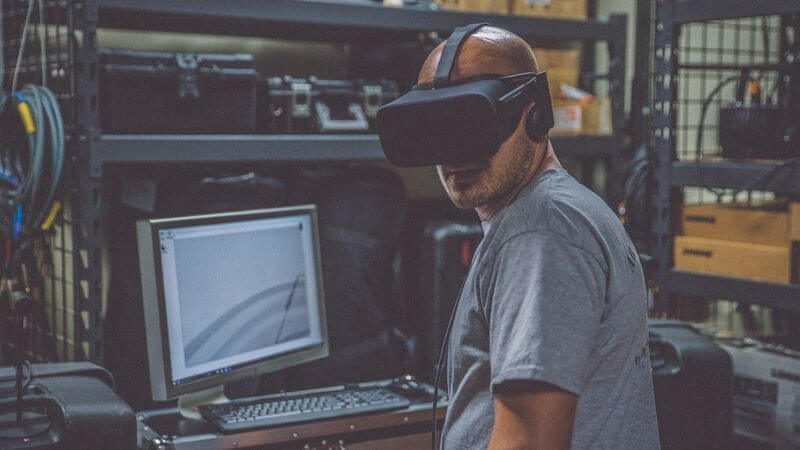
Head related transfer function (HRTF)
A response that represents how an ear of the experiencer perceives a sound that comes from a definite point in the space.
HRTF depends on the individual characteristics of the person, in particular, the structure of his or her auditory apparatus. Specifically, it concerns a size and shape of a head, ears, an ear canal, a head density, nasal and oral cavities’ shape and size. All these things transform the sound and influence the sound perception from person to person.
Head tracking
One of the technologies of virtual reality, in which the position and movements of the head are determined via a tracking device.
Head-up display (HUD)
A part of the player’s visual interface displayed on the background of the virtual game space in the game process from the first person.
Often HUD elements are located around the perimeter of the screen and/or semi-transparent, so as not to interfere with the basic process of the game.
Hidden surface
A digital object or its part that is hidden from the view by other сontent units.
Homeworld
It is a homepage when the experience firstly enters a virtual environment. Here the user can “meet” other players and introduce himself or herself virtually.
I
Image distance
The user’s perceived distance to the object.
Immersion
Psychological feeling of being a part of a virtual environment.
Interactivity
Cooperative and simultaneous communication between subject and object of information, the author, and the user or between different users. A result of such interaction user can become an author and vice versa.
Interaural amplitude
Differences in perception between the two ears of a person in the intensity of sound, usually due to the location of the sound.
Interface (VR)
A set of devices, software, and methods that intertwine computers and people to perform different tasks.
Inverse kinematics
A process of determining the parameters of related flexible objects to achieve the required position, orientation, and location of these objects. Inverse kinematics is a type of motion planning. It is used mainly in those situations where the precise positioning of flexible joints of one object with respect to other objects of the environment is necessary.
Inverse kinematics is actively used in robotics, three-dimensional computer animation, and computer games’ development.
K
Kinesthesia
A perception of the movement and position of one’s own body or its individual parts. This feeling is based on a variety of information, that completely different receptors and sensory systems are involved to obtain.
There are 3 main sources of kinesthetic sensation: proprioceptive, visual and vestibular information.
Kinesthetic dissonance
Feedback mismatch or its absence when touching or moving in virtual reality environment.
L
Latency
Time lag between the beginning of the process (input) and its results (visual, audio, tactile).
Level of details (LOD)
A method in programming three-dimensional graphics, implying creating several versions of one object with different degrees of detail, which switch depending on the removal of the object from the virtual camera. Another method is to use one basic, “roughly approximate” model and several external add-ins to it. Each subsequent add-in to the basic model is supplemented with elements of detail in proportion to the number of the add-in. That is, at the longest distance, the only major model of the object will be displayed. As the user approaches the object, subsequent parts become visible.
The point is that it is inexpedient and expensive in the context of computational resources to display highly detailed objects located at a great distance from the virtual camera. Using LOD can significantly reduce the requirements for computer resources when displaying graphics on the screen, whether it is rendering or output in real time.
However, a widespread bug is associated with LOD, when a low-polygonal model of the object displayed in the foreground.
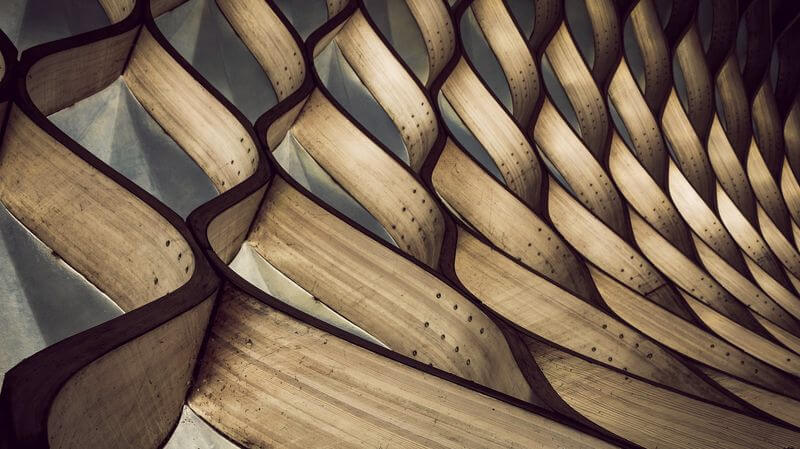
Locomotion
The process of moving from one point to another in a virtual environment. It may refer both to avatar and to a human that moves while experience VR.
M
Metaball
An n-dimensional object in computer graphics, which represents a closed smoothed surface. The technique of rendering metaspheres was invented by Jim Blinn in the early 1980s.
Metallic Distortion
Сontaminating signals or deterioration of the characteristics of electromagnetic trackers when they are used near big metal сonstructions.
Metauniverse
The philosophical basis of virtual reality. A hypothetical set of all possible real parallel universes. Conception about the structure of the Metauniverse, the nature of each universe that is part of its composition, and the relationships between these universes depend on the chosen hypothesis.
Universes included into the Metauniverse are called alternative universes, alternative realities, parallel universes or parallel worlds.
Mixed Reality (MR)
A hybrid reality which is somewhere between the real and virtual environments. This is a brand new environment where both digital and real objects exist simultaneously.
Motion Platform
A platform where an experiencer can feel events in motion relatively what he or she sees in a virtual environment. Motion platform is commonly used in movies to reach more immersive experience.
N
Navigation
Determination of the location, speed, and orientation of moving objects.
Nausea
A conception that virtual reality can cause motion sickness. As a rule, it doesn’t. There is a small percentage of people that have a mild reaction to any type of VR immersion. Actually, nausea is mostly provoked by discrepancies between movements and what a person sees. Motion sickness also often occurs while travelling by car or by airplane.
In the future, this problem must be resolved with the development of technical means for immersion into the virtual reality.
Navatar
It’s a relatively uncommon from VR glossary. It means a user’s personal guide through a new virtual reality environment. Navatars introduce new experiences through virtual worlds and games.
Non-player character (NPC)
A character which is controlled by a computer.
O
Occipital lobe
A part of a brain where visual cortex is located. The latter is responsible for the perception and processing of visual information.
Occlusion
A situation in VR when an object or a part of an object is beyond user’s field of view.
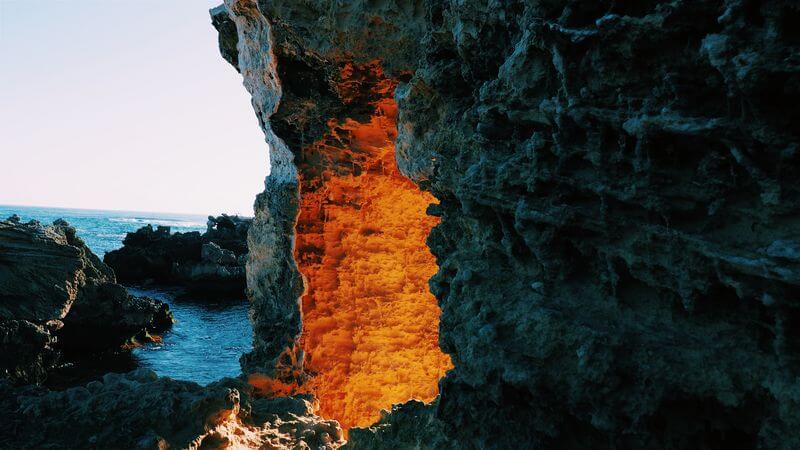
P
Pan shot
Scene display with a large viewing angle that exceeds the capabilities of conventional lenses, and often more than 180 degrees.
Parallax
A change in the visible position of an object relative to the distant background, depending on the position of the observer.
Parallax mapping
A software technique in three-dimensional computer graphics, an improved version of the techniques of bump mapping or normal mapping. Parallax mapping is used to procedurally create a 3D description of a textured surface using displacement maps instead of generating a new geometry. Parallax mapping can be termed “2.5D” because it allows adding 3D complexity to textures without creating real 3D graphics structures.
Perspective
A technique of depicting spatial objects on a surface in accordance with those apparent changes of their dimensions, the outlines of the form, light-and-dark parameters.
The perspective as a technique of depiction appeared in the Renaissance, as at that time the realistic trend in the visual arts reached its peak. The created displaying system of visual perception of spatial forms and space made it possible to solve the problem that architects and artists faced.

Photorealism
A technique of displaying visual information using maximum level of detail.
Portal
A defined boundary or sign that allows a user to understand that he or she is moving from one virtual space to another.
Position sensor
A tracking appliance that gathers information about the location and/or orientation of the experiencer.
Presence
Feeling in a virtual environment, as if a user actually is in it. Presence is achieved due to the high degree of immersion when all the incentives are aimed at creating the ultimate experience for a user.
R
Ray Tracing
A method of displaying 3D object with shadows and shading by tracing light rays backwards from the position of view to the light source.
Reality engine
A computer system for creating virtual objects and environments according to user’s input, as a rule, in real time.
Real-time action
An action that takes place without a time lag or with a minimum one after the input commands so that it does not distort the processes occurring in the environment.
Real-time game
A game where time moves constantly along with the game clock. Players must perform actions taking into account that their opponents actively work against them in real time and can act at any moment. This adds a time management task and associated requirements to the player (for example, physical coordination).
The real-time game process is the dominant form of time management in simulators, and also largely ousted step-by-step systems of other computer games’ genres.
Refresh Rate
The series of images in virtual reality and their updating speed of updating.
S
Scenes view
The picture from a virtual display that can be seen on a large screen, not with the help of the immersive device.
Shared worlds
Virtual environments that are used simultaneously by numerous experiencers.
Six degrees of freedom (6DOF)
An ability to move in three spatial directions experiencing virtual reality. The term is called so, as orientation in space and location are described by 6 coordinates.
Social VR
A virtual reality environment where it is possible to interact with other users and players.
Spatial navigation
Self-orientation and ability to move in VR with the help of binocular vision of images from different points of views distinguishing depth of VR and using devices that provide sensations.
Shared worlds
Virtual environments that are used simultaneously by numerous experiencers.
Stitching
It is a process of combining many videos from different cameras with overlapping FOVs (fields of view) to create immersive 360° videos.
T
Technsplanation
One of VR technology applications the essence of which is an explanation of some concepts or teaching something.
Telexistence
A term that can be found in every VR glossary. It is a technology concept that allows one to feel being in one place while he or she is really in another one. Also, the possibility to interact with a remote environment that may be virtual, real or mixed.
Telepresence
A set of technologies that allows an experiencer with the help of special devices to get the impression that a user is located and/or acts in a place different from the physical location.
To ensure complete telepresence, it is necessary for a user to receive the same sensations as if he was in a different location. Also, an experiencer can have the ability to work on a remote location. In this case, the movements, actions, voice, etc. of the user must be read, transmitted and reproduced in a remote location.
Terrain
An information about geographical characteristics or geographical models of a certain area in a virtual environment.

Three-dimensional graphics
A section of computer graphics, dedicated to the methods of creating images or video by modelling 3D objects in three-dimensional space.
The graphic representation of 3D objects differs in that it includes the construction of a geometric projection of a three-dimensional model on a plane (for example, a computer screen) using specialized programs. However, with the creation and implementation of 3D displays and 3D printers, 3D graphics do not necessarily include projecting onto a plane.
A peculiar extension of 3D graphics is augmented reality. Using the technology of image recognition (markers), AR programs complete virtual 3D objects in a real physical environment. The user can interact with the marker: rotate in different directions, illuminate differently, close some of its parts and observe the changes that occur with the 3D object on the computer monitor screen.
Tracker
An information input device for a personal computer that converts the movements of an experiencer (more often, head and body) into coordinates. Such devices are used in motion capture systems.
U
Universe
A collection of entities and spaces that together create the feeling of a virtual environment.

V
Virtual minimally invasive surgery (MIS)
A kind of surgical operations that can be conducted and trained with the help of particular interaction devices and computer models.
One of the examples of minimally invasive surgeries (MIS) is laparoscopy. These operations in contrast to abdominal ones minimize damage to the soft tissues, what reduces the recovery period. In the training process, a student literally feels like an experienced surgeon performs the operation. The student puts his hands on the tool and force feedback allows him to experience the actions of the expert.
Virtual reality (VR)
Artificially created reality where the experiencer has the feeling that he is in this world and has the possibility to freely move and manipulate objects.
Virtual world
An artificially created world, built through programming, based on computer technology.
Virtual worlds are designed for the pastime of users. Today they are more like an interactive virtual 3D environment, mostly represented in the form of multiplayer games. Also, the virtual world can be a website where users manifest themselves by using their name, nickname, photo or avatar, their graphic or text (visible to other users of the virtual world) information.
The functions of virtual worlds are not limited only to entertainment. So-called virtual business worlds are gaining popularity. These platforms are based on three-dimensional space, users of which are companies that want to build an online office for more efficient business.
Users or residents of virtual business worlds are able not only to play with each other, but also to create, and also sell goods or services. Today, more and more people work beyond usual offices, do not obey an orderly schedule, and practically do not communicate with their colleagues. Therefore, a virtual business reality can be very useful to create a team, establish close working relationships, maintain a common corporate culture in the conditions when employees are strewn across the vast expanse.
Visualisation
A general name for the methods of presenting numerical information or a physical phenomenon in a form suitable for visual observation and analysis.
VR face
As a rule, the surprised or frightened slack-jawed face of a person who is present in virtual reality with the help of HMD.
VR peripheral device
A device that helps to improve VR experience by deeper immersion into VR.
The most popular peripheral devices are gloves, controllers, and suits.
It was a brief and elementary VR glossary. If you have something useful to add, offer your options in comments.
If you want to ask any specific details, please, feel free to contact us or comment below.
Follow our blog to learn more about virtual reality technologies and haptic feedback.
